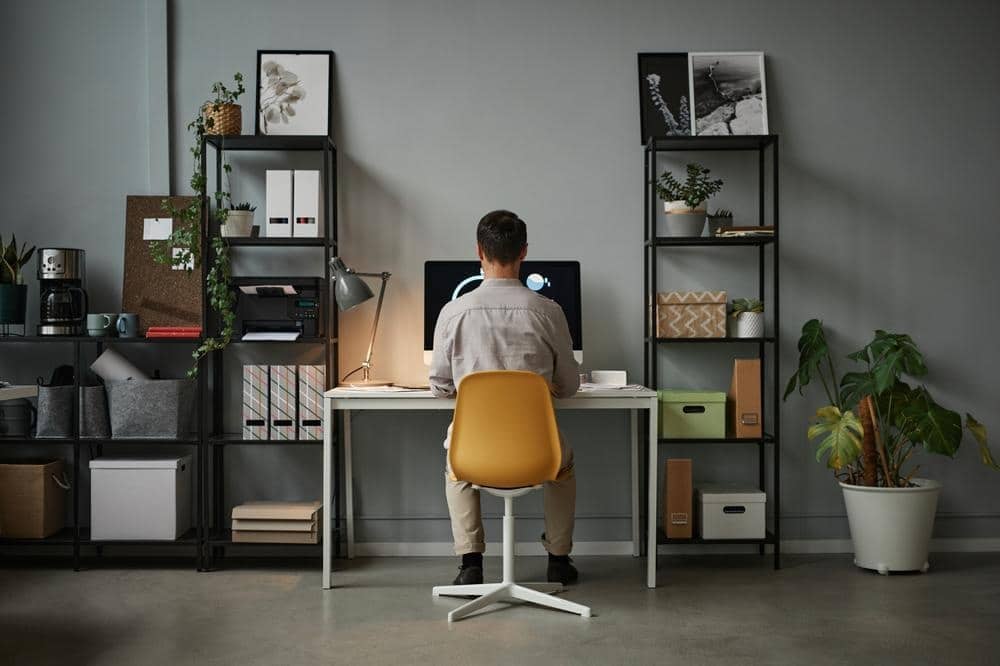In today’s world, where remote work has become the new norm, having a dedicated and well-designed home office is more important than ever. A well-organized and aesthetically pleasing workspace can significantly impact productivity and overall well-being. This guide will walk you through the essential steps to create a cozy and functional home office, ensuring you have a space that promotes both efficiency and comfort.
Introduction
With the rise of remote work and flexible schedules, the need for a functional and inviting home office has never been greater. Whether you’re a freelancer, a remote employee, or a business owner, your home office should be a space that inspires creativity, focus, and productivity. This article will provide you with practical tips and ideas to transform your home office into a haven of productivity and comfort.
Assessing Your Space
Before diving into the design and organization of your home office, it’s crucial to assess the available space. Consider the following questions:
- How much space do you have?
- Is it a dedicated room or a corner of another room?
- What are the lighting conditions?
Understanding the constraints and possibilities of your space will help you make informed decisions about furniture, layout, and decor.
Choosing the Right Furniture
The foundation of any home office is its furniture. Investing in high-quality, ergonomic furniture is essential for your health and productivity. Here are some key pieces to consider:
- Desk: Choose a desk that fits your space and provides enough surface area for your work essentials. Adjustable desks are a great option for those who prefer to switch between sitting and standing.
- Chair: An ergonomic chair with adjustable height, lumbar support, and comfortable cushioning is crucial for maintaining good posture and preventing back pain.
- Storage: Ample storage solutions, such as shelves, filing cabinets, and drawers, will help keep your workspace organized and clutter-free.
Lighting Matters
Proper lighting is vital in a home office as it affects both productivity and mood. Natural light is ideal, so position your desk near a window if possible. However, relying solely on natural light might not be practical, especially during cloudy days or nighttime. Therefore, it’s essential to incorporate different types of lighting:
- Ambient Lighting: This is the general lighting that illuminates the entire room. Overhead lights or ceiling fixtures work well for this purpose.
- Task Lighting: Focused lighting, such as desk lamps, helps reduce eye strain and provides adequate illumination for specific tasks.
- Accent Lighting: Use accent lighting to highlight decor elements or create a warm and inviting atmosphere.
Personalize Your Space
A home office should reflect your personality and style. Personalizing your workspace can make it more enjoyable and inspiring. Here are some ideas:
- Artwork and Decor: Hang artwork or motivational posters that inspire you. Add decorative elements like plants, rugs, and curtains to create a cozy atmosphere.
- Color Scheme: Choose a color scheme that promotes focus and calmness. Soft blues, greens, and neutrals are popular choices for home offices.
- Inspiring Quotes: Place quotes or affirmations that motivate you within your line of sight. This can serve as a constant reminder of your goals and aspirations.
Staying Organized
A cluttered workspace can lead to a cluttered mind. Keeping your home office organized is essential for maintaining productivity. Here are some tips:
- Declutter Regularly: Set aside time each week to declutter your desk and office space. Get rid of unnecessary items and organize essential ones.
- Use Organizers: Utilize desk organizers, file holders, and storage bins to keep everything in its place.
- Digital Organization: Keep your digital files organized by creating a systematic folder structure and regularly backing up important documents.
Creating a Distraction-Free Zone
One of the challenges of working from home is dealing with distractions. Establishing a distraction-free zone in your home office is crucial for maintaining focus. Here are some strategies:
- Set Boundaries: Communicate with family members or housemates about your work hours and the importance of minimizing interruptions.
- Noise Reduction: Use noise-canceling headphones or white noise machines to block out distracting sounds.
- Designated Work Area: Clearly define your work area and avoid using it for non-work-related activities.
Ergonomics and Comfort
Creating a comfortable and ergonomic workspace is essential for your well-being. Poor ergonomics can lead to discomfort and health issues. Here are some tips to ensure your home office is ergonomically sound:
- Monitor Placement: Position your monitor at eye level to prevent neck strain. Use a monitor stand if necessary.
- Keyboard and Mouse: Ensure your keyboard and mouse are at a comfortable height to avoid wrist strain. Consider using an ergonomic keyboard and mouse pad.
- Chair Height: Adjust your chair height so that your feet are flat on the floor and your knees are at a 90-degree angle.
Conclusion
Designing a cozy and functional home office is a worthwhile investment that can greatly enhance your productivity and overall well-being. By carefully assessing your space, choosing the right furniture, incorporating proper lighting, and personalizing your workspace, you can create an environment that fosters creativity and focus. Remember to stay organized, establish boundaries, and prioritize ergonomics to make the most of your home office. With these tips, you’ll be well on your way to creating a home office that you love and that supports your professional success.

